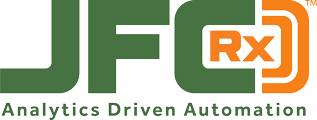
Choosing The Right Pharmacy Automation System: Key Considerations And Best Practices
The list of challenges facing modern pharmacies is long and varied. Staffing shortages are exacerbated by rising prescription fills. Additionally, the trend towards at-home care programs presents intriguing business opportunities that can boost profitability while increasing the quality of patient care. Automation systems enable pharmacies to address these challenges by improving efficiency, accuracy, and patient safety. However, selecting the right pharmacy automation system requires careful consideration of your pharmacy’s specific needs and goals.
Pharmacies Face Mounting Challenges
The demand for pharmacy services is rising in the United States due to an aging population and an increased prevalence of chronic diseases that require medication management. Pharmacies play a crucial role in dispensing prescription and over-the-counter drugs to patients, while also providing essential guidance on proper storage, dosing instructions, and additional services like immunizations, blood pressure monitoring, and diabetes education. The prescription process involves multiple steps from reception to dispensing, highlighting the importance of safe and efficient pharmacy operations to meet the growing healthcare needs of the population.
Staffing shortages have led to the emergence of ‘pharmacy deserts,’ according to one journal, leaving patients with limited or no access to essential medications or the ability to seek healthcare advice (Philadelphia College of Osteopathic Medicine). These shortages are colliding with increasing workloads.
For instance, as America’s population ages, the number of prescriptions taken rises accordingly. Among adults aged 65 and older, 89% report they currently take a prescription medication and more than half or 54% take multiple prescription drugs—four or more per day. This in part contributes to the soaring number of prescriptions filled annually in the U.S., totaling 6.7 billion prescriptions issued in 2022 compared to under 4 billion in 2009. As pharmacies face multiple pressure points, an automation system can help alleviate the pressure.
What is Pharmacy Automation?
Pharmacy automation uses specialized equipment and software to streamline time-consuming tasks like pill dispensing, packaging, and verification. This frees up pharmacy staff to focus more on clinical services and patient care activities. In addition, these systems are designed to reduce the risk of human error, enhance efficiency, and contribute to better patient outcomes for medication adherence, for example, through advanced technology solutions. Common types of pharmacy automation include:
- Automated pill dispensing (vial filling)
- Multi-dose blister card packaging
- Adherence pouch packaging
- Automated pill identification/verification
By automating these repetitive tasks, pharmacies can increase production volumes, reduce medication errors, and enable staff to work at a higher level.
Types of Automated Dispensing Systems
The main types of automated dispensing systems used in pharmacies include:
Vial Filling/Automated Pill Dispensing – These robotic systems automatically dispense pills into vials or bottles for individual patient prescriptions. This is still the predominant dispensing method for most retail pharmacies.
Multi-Dose Blister Cards – Blister packaging organizes multi-dose medications into individual plastic cavities for a specific time (morning, noon, etc.). This improves adherence for patients taking multiple daily medications.
Adherence Pouch Packaging – Similar to blister cards, adherence pouches contain all of a patient’s medication doses organized by date/time. Pouches enable greater medication volumes per package.
While pharmacy automation has been around for decades, adherence packaging solutions continue to gain popularity. Individual adherence or compliance pouch packages are commonly used in care settings such as long-term care facilities, rehabilitation centers, mental health facilities, hospitals, and even by home health care agencies as part of at-home medication management programs.
Why Do Pharmacies Use Automated Dispensing?
There are two main drivers for adopting pharmacy automation:
- Patient Volume — As a pharmacy’s prescription volumes increase past a certain threshold, the manual workload becomes too high for staff to handle efficiently. Automation enables scaling up production capacity.
- New Business Opportunities — Many lucrative business lines require specific packaging formats that cannot be accomplished manually at scale. For example, landing a contract to provide adherence pouches for an assisted living facility would necessitate investing in adherence packaging automation.
Pharmacy automation enables businesses to handle higher volumes of prescriptions efficiently and accurately. In addition, automation allows pharmacies to expand their services, like offering adherence packaging, which might be a critical service necessary to secure certain contracts, such as with local nursing homes or at-home care programs that require specific packaging types.
In addition to increased capacity and new revenue streams, other benefits of automation include improved accuracy/patient safety, reduced staffing pressures, and higher customer satisfaction.
Key Considerations for Selecting an Automated Pharmacy System
Not all pharmacy automation systems are created equal. To ensure choosing the right solution, consider these critical factors:
Scalability – Your automation must be able to scale with your business growth, whether through expanding the capacity of the initial system or a path to upgrade to more advanced models. Scalability helps the initial investment remain viable and continue to pay dividends when the automation system can expand alongside your business. Avoid being locked into a system with limited growth potential.
Integration Capabilities – Opt for systems that offer flexible integration with your existing software. Systems with open APIs (application programming interface) enable data to flow seamlessly between different platforms, enhancing the usability of the data and the efficiency of pharmacy operations. Avoid walled systems that don’t enable integration.
User-Friendliness – A system that is easy to use reduces training time and helps retain staff by lowering the workload and stress associated with manual dispensing tasks. The solution’s user interface, workflows, and exception handling processes should make employees’ lives easier — not more difficult.
Reliability/Service – Unplanned downtime is extremely disruptive and costly. Reviewing the system’s historical reliability data and service response times is crucial, as is the vendor’s processes for maximizing uptime.
Focused Pharmacy Operations Expertise – The vendor should be an expert in pharmacy operations workflows — not just an equipment manufacturer. Their teams need experience optimizing dispensing processes to maximize their automation’s impact.
Partnership over Transaction – Simply buying a piece of hardware is shortsighted. The vendor should take a consultative partnership approach, working closely to understand your goals and designing solutions to achieve them. Avoid one-size-fits-all, transactional implementations.
Partnering with a company like JFCRx for automated solutions enables pharmacies to meet these objectives for an automated system, with an investment that adds tremendous value by driving efficiency, growth, and delivering a better patient experience. Realizing these benefits requires carefully evaluating your near and long-term needs against potential solutions’ capabilities. Give us a call or check online to investigate the many options we offer to help you select the proper automation system for your business needs.

